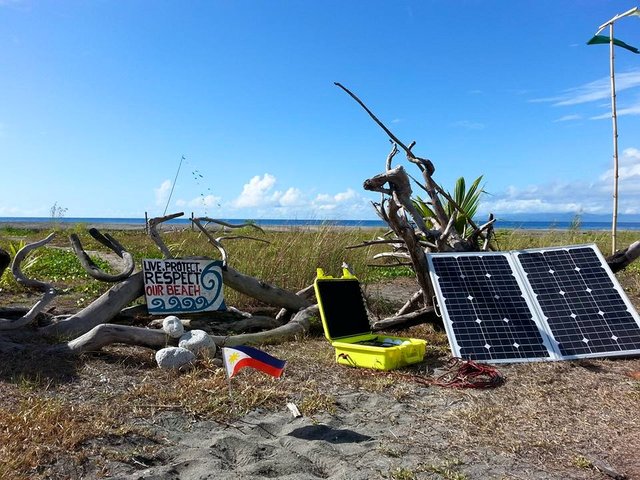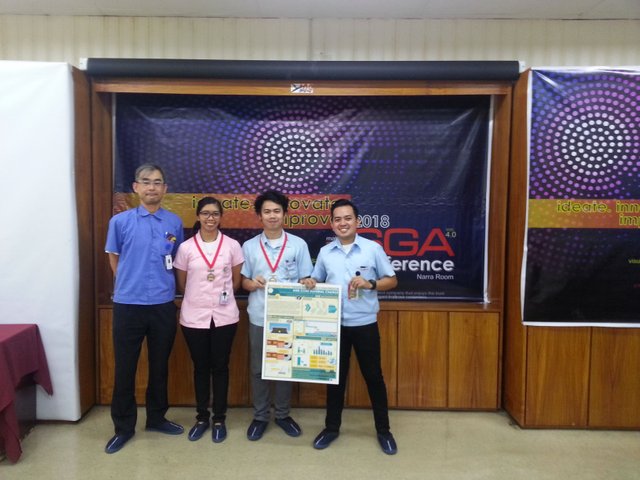The DMAIC (Define-Measure-Analyze-Improve-Control) Approach to Problem Solving in Work and Life in General
I know I have sold myself across as an outdoorsman who spends her days climbing mountains and diving reefs but my day job is actually quite opposite from those. If you’ve gone through my introduction posts, you would probably already know that I am a registered electronics engineer, the 53,784th of our kind the country. Contrary to most people, I actually love Mathematics and I spent a lot of time as a kid reading Science books. Engineering became a way to connect those two interesting subjects and make real world applications that have actually propelled our technology into an advanced state.

Photo source
I’ve done a couple of engineering jobs including running control systems in a sugar mill, controlling the data broadcasted by a local television company (for a while I actually had control of what shows up on your TV screens), maintaining the manufacturing process of a semiconductor product, repairing circuit boards consisting of very tiny components with up to eighteen layers of circuitry packed in a roughly around 1mm thick board, and setting up a photovoltaic system to power up our office, electric vehicles, and becoming ‘inspector gadget’ of whatever solar PV system innovation that could be useful to the community.

A solar photovoltaic system that I innovated for a disaster situation (Photo owned by author)
This brings us to the present where I am now back in corporate engineering world as a product engineer for the manufacturing of a tiny electronic component. My day job requires me to think on my feet and to constantly solve problems that transpire during the manufacturing process. This daily routine has configured me to look at not only various aspects of my job, but also most aspects of life in general, in an analytical thought process. Today, I will share with you a very basic technique that you can use in solving problems: the DMAIC approach.

Photo source
Define
First off, you need to define what the problem you are trying to solve is. This definition part should include the scope and background of the problem and how solving this may be relevant to you. This step often requires you to take a step back and look at the picture from a wider view.
Engineering scenario: Three years ago, I innovated a solar photovoltaic portable set-up that can be used as emergency equipment during disasters and evacuation settings. However, the power inverter keeps on experiencing an overload in current and becomes busted.
Non-engineering scenario: Over the years, I have kept a small population of pumpkin cacti. These plants are not difficult to grow because they do not require a lot of watering. However, I have observed that some of them have started dying.
Measure
Gather all quantifiable data. By putting numerical values in different attributes, it will be easier to track if certain parameters are increasing or decreasing.
Engineering scenario: Every time a 700 watts water heater is connected to the power inverter. The power inverter explodes or becomes busted. The power inverter is rated to only 200 watts.
Non-engineering scenario: I currently have six matured cacti that are capable of bearing new babies. I have transplanted nine baby cacti into smaller pots.
Analyze
Based on the knowledge of the problem and the quantifiable data that was measured, analyze what could have caused the problem. One common analysis technique is the why-why-why method wherein you keep on asking the question “why?” until such time that you arrive in a root cause that you can provide a solution for.
Engineering scenario:
Why does the power inverter explode? Because there is an overload in the system.
Why is there an overload in the system? Because the load connected does not match the rating of the inverter.
Why does the load not match the rating of the inverter? Because the load is 700 watts.
Non-engineering scenario:
Why did the nine baby cacti easily die? Because they were in smaller pots.
Why were they in smaller pots? Because the plants were too small in size.
Why were they too small in size? Because they were transplanted prematurely.
Improve
Now that you have arrived at a root cause in the Analyze part, you can now provide solutions in eliminating those problems. This could in turn improve your situation as a whole.
Engineering scenario:
Do not connect loads beyond 200 watts.
Non-engineering scenario:
Do not prematurely transplant the baby cacti.
Control
Controlling is important in making sure that the improvement actions are maintained and that the said problem should not occur again.
Engineering scenario:
Properly label the inverter port to show that only 200 watts load are allowed. Place a fuse that will trip off once the 200 watts load limit is exceeded.
Non-engineering scenario:
Monitor the number of days since the babies started sprouting or measure the diameter of the babies. Harvest or transplant only when the babies are strong enough to live in their own pots.
DMAIC is a very simple technique which is also easy to memorize. By using the DMAIC approach, you come up with an organized thought process and you do not miss out on important details. It also avoids you from getting caught up in unnecessary information. The examples given here sounded plain and simple but in bigger scale applications, this could also get complicated and filled with details.
Recently, we joined a project-making competition within our company and we used the DMAIC approach. The simplicity of this technique made it is easy for us to present complicated and technical data even to people who do not have the technical grasp of our manufacturing process. We emerged as the top three among ten contenders, proof that an organized problem solving approach will surely stand out.

After our project presentation using DMAIC and bagging some awards from the bosses. (Photo owned by author)
I hope you have learned something new from me today.
Cheers,
Xayd
Congratulations @xaydtrips, your post have been featured at Best of PH Daily Featured Posts.
You may check the post here.
About @BestOfPH
We are a curation initiative that is driven to promote Filipino authors who
are producing quality and share-worthy contents on Steemit.
If you would like to delegate to Best of PH you can do so by clicking on the following links.
100SP, 250SP, 500SP, 1000SP, 5000SP.
See Curation/Delegation Incentive Scheme here. Be sure to leave at least 50SP undelegated on your account.
Follow our trail and vote for curated Pinoy authors. If you are a SteemAuto user, @bestofph is an available trail to follow.
If you want to be part of the community, join us on Discord